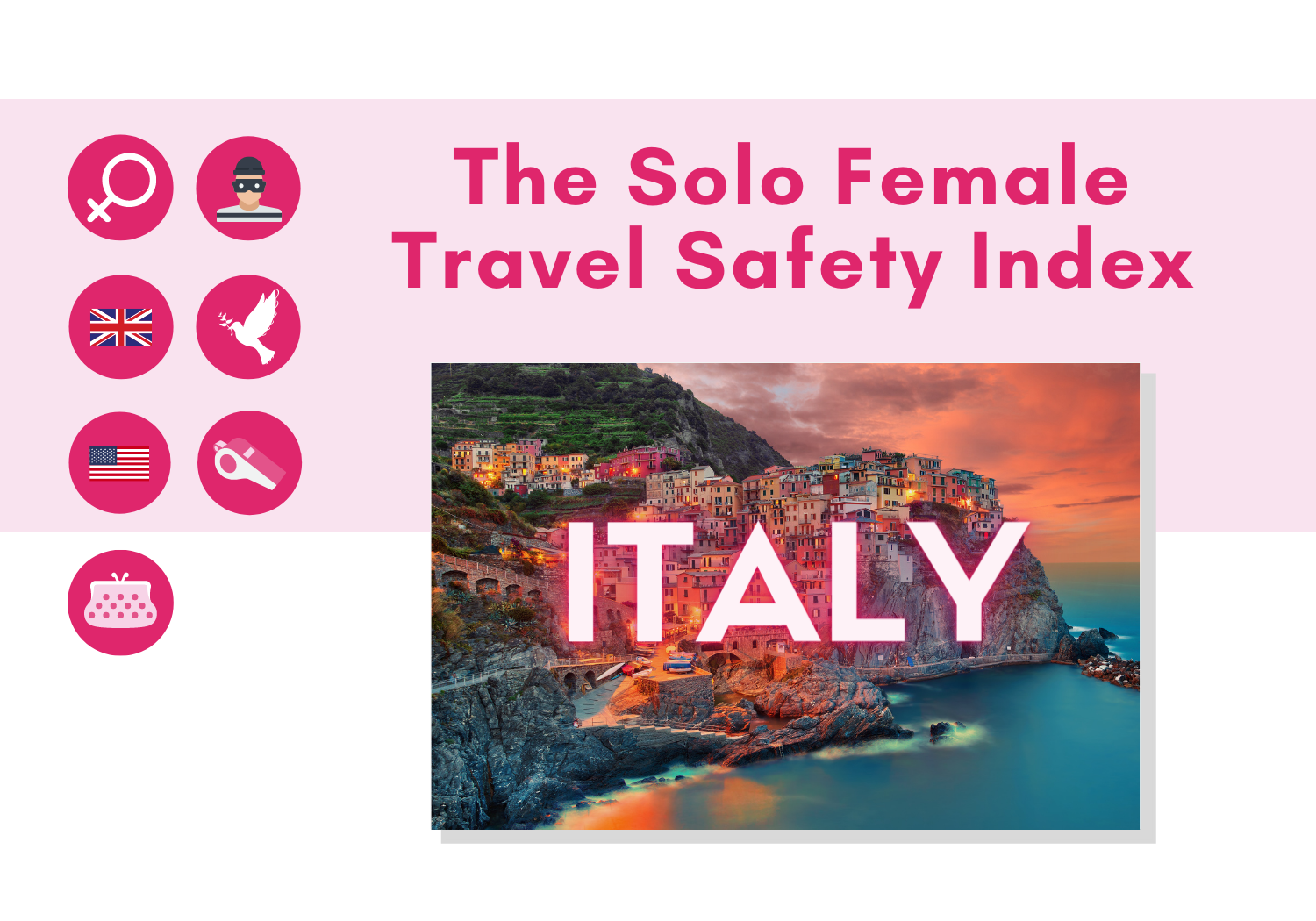This post may contain affiliate links. For full information, please see our disclaimer here and our Privacy Policy here.
Welcome to the Solo Female Travel Safety Tips and Advice page for Italy!
This page is brought to you by Solo Female Travelers Tours, our curated small group trips for women, by women.
On this page you will find first-hand, unbiased, and real safety tips, advice and reviews from women traveling solo, submitted directly from their personal experiences in the country.
Their opinions are unfiltered and submitted independently as part of the Solo Female Travel Safety Index, a ranking of 210 countries and regions based on how safe they are for women traveling solo.
The safety scores range from 1 to 4 with 1 being the safest and 4 being the most dangerous for solo female travelers.
You don’t need to login to read the below reviews. But do sign up or login to share your solo travel experiences, country safety rating and comments.
Jump straight to: Travel Tips | About the Index | Resources I Leave a Review
MAKE A DIFFERENCE – LEAVE YOUR SAFETY REVIEWS!
We can make the world a safer place for women traveling solo together. Sign up to our portal and leave your reviews NOW. Share your experience with other solo female travelers and help us empower more women through travel.
Italy Country data
We have compiled a few data points below that can help you better understand Italy and have more context when thinking about travel safety.
Official country name: Italian Republic.
Etymology: Derivation is unclear, but the Latin "Italia" may come from the Oscan "Viteliu" meaning "Land of Young Cattle" (the bull was a symbol of southern Italic tribes).
Country map
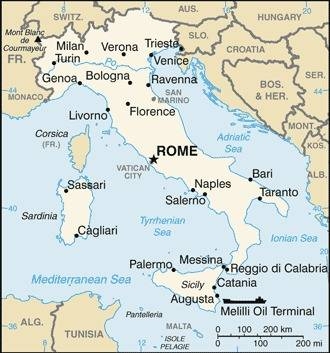
Locator map
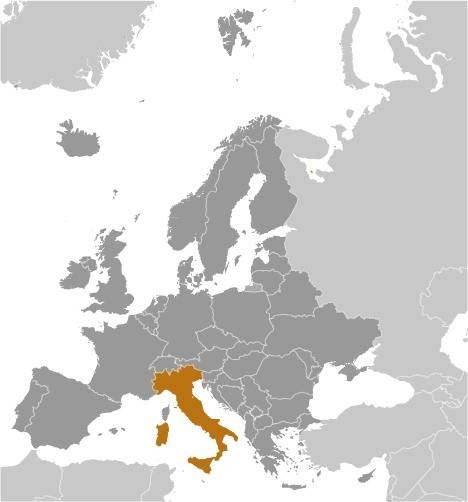
Flag
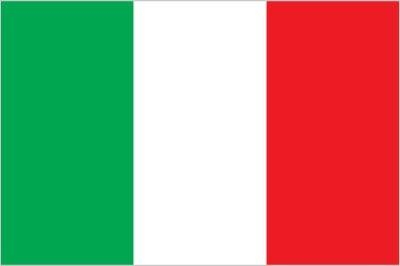
Capital: Rome.
Independence / foundation: Italy became a nation-state in 1861 when the regional states of the peninsula, along with Sardinia and Sicily, were united under King Victor Emmanuel II.
Population: 61 million.
Currency: Euro (EUR)
1 USD = 0.91 - 0.93
Time zone: UTC+1
Languages spoken: Italian (official), German (parts of Trentino-Alto Adige region are predominantly German-speaking), French (small French-speaking minority in Valle d'Aosta region), Slovene (Slovene-speaking minority in the Trieste-Gorizia area).
Religions: Christian 81% (overwhelmingly Roman Catholic with very small groups of Jehovah's Witnesses and Protestants), Muslim 5%, unaffiliated 13%, other <1%.
Climate: Predominantly Mediterranean. Alpine climate in the far north and hot and dry in the south.
Real GDP (ppp – purchasing power parity): $2.6 trillion.
Real GDP per capita (ppp): $44,300.
Main airports: Leonardo da Vinci–Fiumicino Airport, Malpensa International Airport, Venice Marco Polo Airport, Bologna Guglielmo Marconi Airport, Naples International Airport.
World heritage sites in Italy
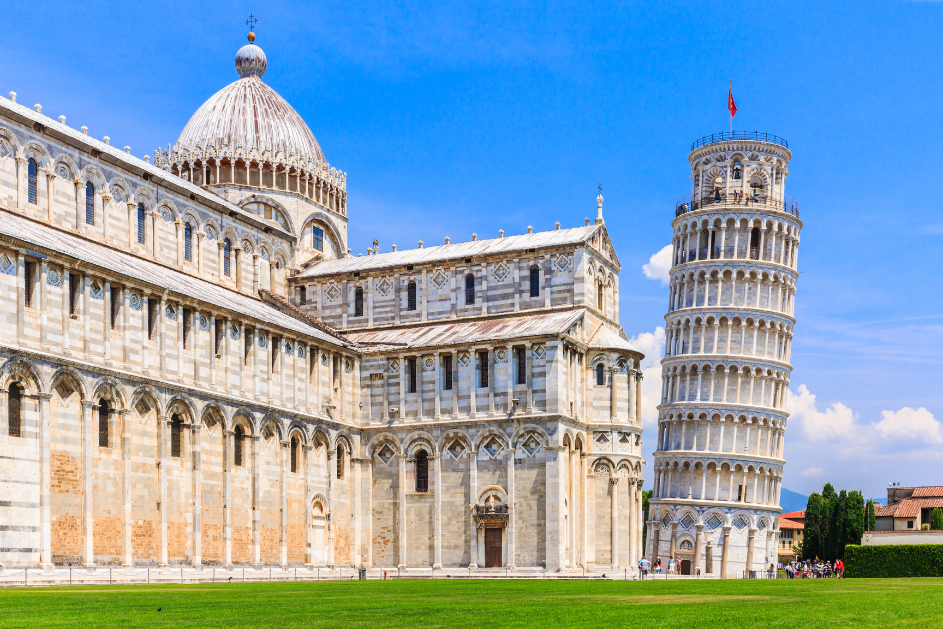
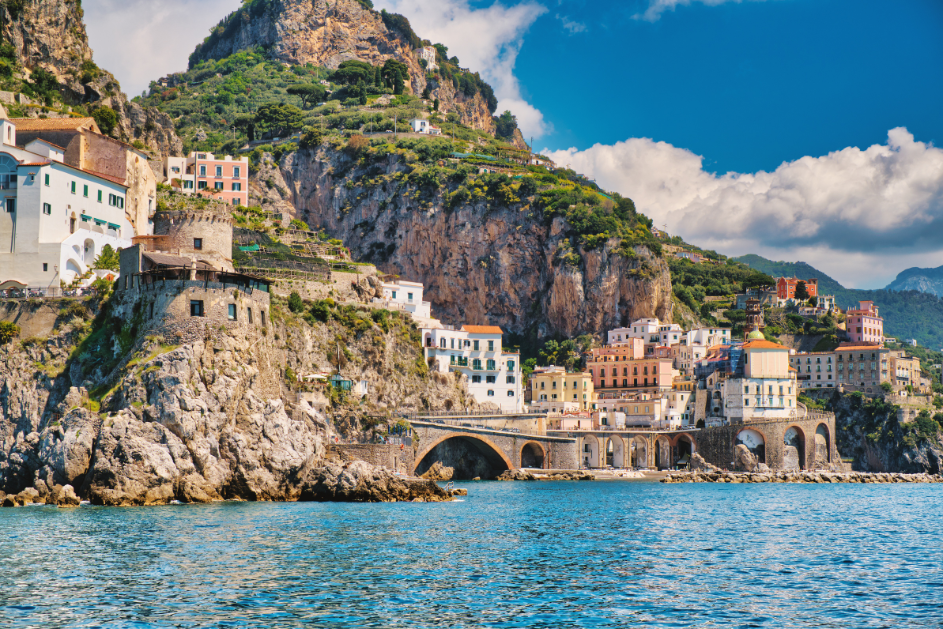
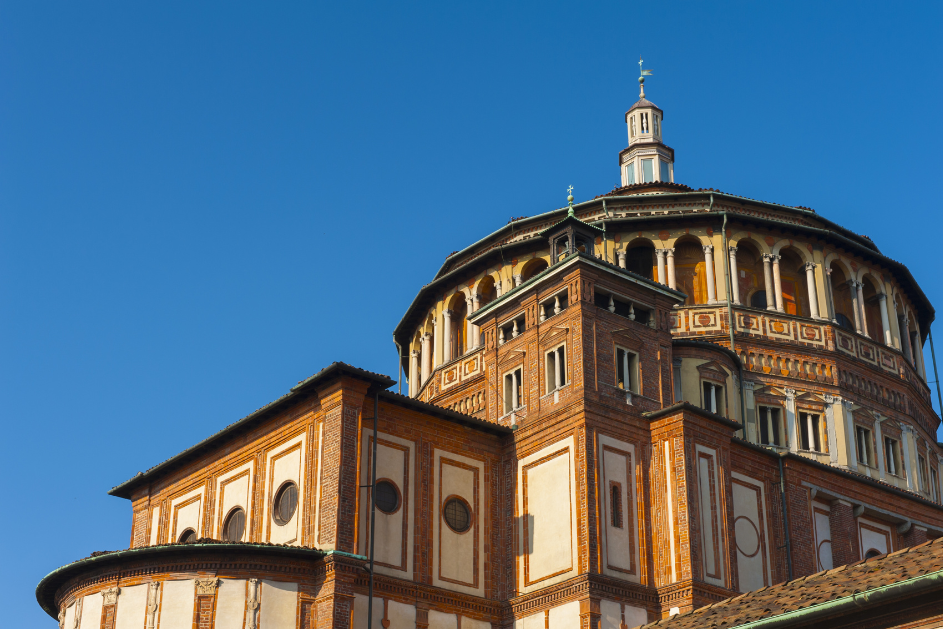
There are over 1,100 world heritage sites spread across more than 165 countries. New ones are added every year, and some may be removed from the list for various reasons.
Number of UNESCO listed sites: 59.
Top world heritage sites:
- Piazza del Duomo (Pisa).- Church and Dominican Convent of Santa Maria delle Grazie with “The Last Supper” by Leonardo da Vinci.
- Costiera Amalfitana.
- Historic Centre of Rome, the Properties of the Holy See in that City Enjoying Extraterritorial Rights and San Paolo Fuori le Mura.
- Historic Centre of Florence.
- Venice and its Lagoon.
- Historic Centre of San Gimignano.
- The Sassi and the Park of the Rupestrian Churches of Matera.
- City of Vicenza and the Palladian Villas of the Veneto.
- Historic Centre of Naples.
- Crespi d'Adda.
- Historic Centre of Siena.
- Ferrara, City of the Renaissance, and its Po Delta.
- Castel del Monte.
- Historic Centre of the City of Pienza.
- Early Christian Monuments of Ravenna.
- The Trulli of Alberobello.
- Archaeological Areas of Pompei, Herculaneum and Torre Annunziata.
- 18th-Century Royal Palace at Caserta with the Park, the Aqueduct of Vanvitelli, and the San Leucio Complex.
- Botanical Garden (Orto Botanico), Padua.
- Cathedral, Torre Civica and Piazza Grande, Modena.
- Portovenere, Cinque Terre, and the Islands (Palmaria, Tino and Tinetto).
- Rock Drawings in Valcamonica.
- Residences of the Royal House of Savoy.
- Su Nuraxi di Barumini.
- Archaeological Area of Agrigento.
- Villa Romana del Casale.
- Historic Centre of Urbino.
- Archaeological Area and the Patriarchal Basilica of Aquileia.
- Cilento and Vallo di Diano National Park with the Archeological Sites of Paestum and Velia, and the Certosa di Padula.
- Villa Adriana (Tivoli).
- Assisi, the Basilica of San Francesco and Other Franciscan Sites.
- City of Verona.
- Isole Eolie (Aeolian Islands).
- Villa d'Este, Tivoli.
- Late Baroque Towns of the Val di Noto (South-Eastern Sicily).
- Monte San Giorgio.
- Sacri Monti of Piedmont and Lombardy.
- Etruscan Necropolises of Cerveteri and Tarquinia.
- Val d'Orcia.
- Syracuse and the Rocky Necropolis of Pantalica.
- Genoa: Le Strade Nuove and the system of the Palazzi dei Rolli.
- Ancient and Primeval Beech Forests of the Carpathians and Other Regions of Europe.
- Mantua and Sabbioneta.
- Rhaetian Railway in the Albula / Bernina Landscapes.
- The Dolomites.
- Longobards in Italy. Places of the Power (568-774 A.D.).
- Prehistoric Pile Dwellings around the Alps.
- Medici Villas and Gardens in Tuscany.
- Mount Etna.
- Vineyard Landscape of Piedmont: Langhe-Roero and Monferrato.
- Arab-Norman Palermo and the Cathedral Churches of Cefalú and Monreale.
- Venetian Works of Defence between the 16th and 17th Centuries: Stato da Terra – Western Stato da Mar.
- Ivrea, industrial city of the 20th century.
- Le Colline del Prosecco di Conegliano e Valdobbiadene.
- The Great Spa Towns of Europe.
- The Porticoes of Bologna.
- Padua’s fourteenth-century fresco cycles.
- Evaporitic Karst and Caves of Northern Apennines.
Interesting facts about Italy
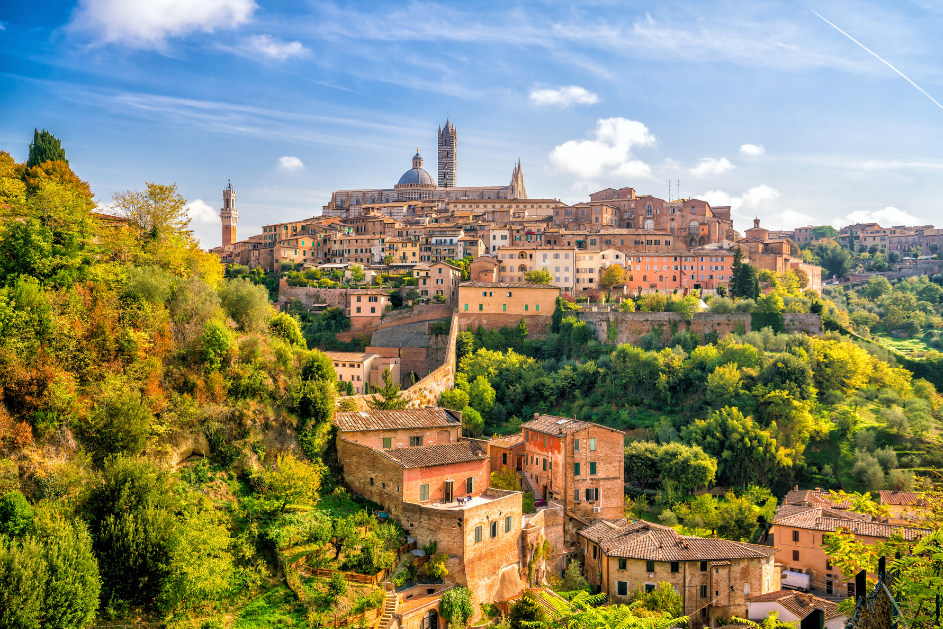
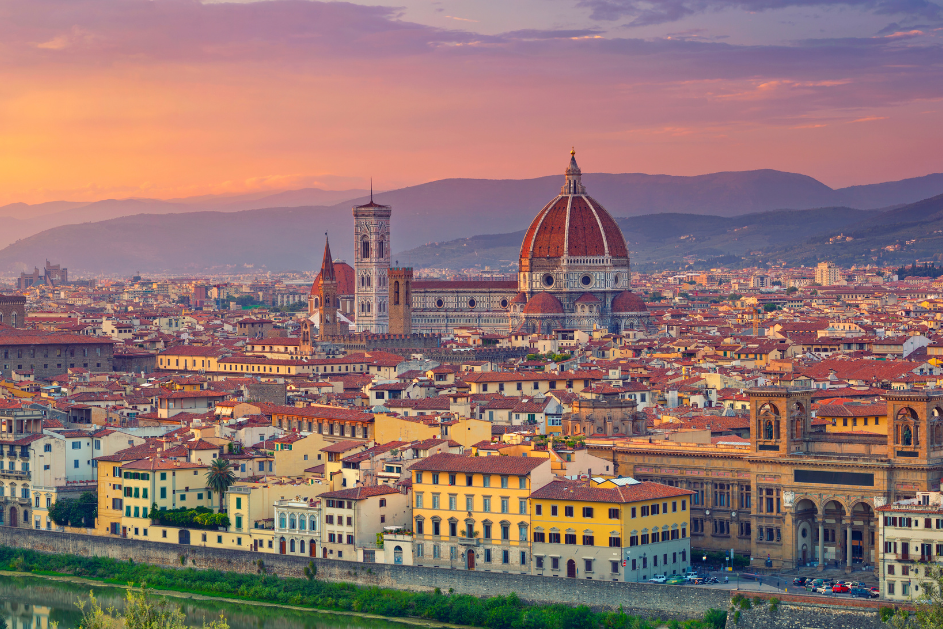
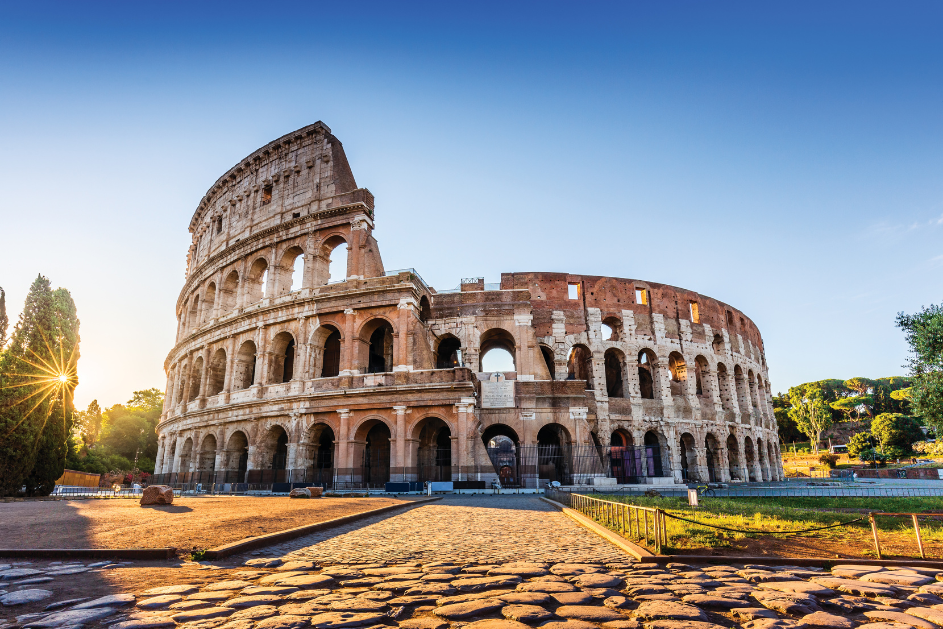
- Italy is home to 58 UNESCO World Heritage sites. It's the country with most UNESCO World Heritage Sites in the world.
- Italians drink 14 billion cups of espresso a year.
- Italy is the largest wine producer in the world, followed by France and Spain.
Further reading: N/A.
Italy Travel tips
Socket type: C / F / L. Guide to socket types.
Weekend days: Saturday and Sunday.
Driving: Cars drive on the Right.
Local taxi apps: Uber, ItTaxi.
Travel Guides: Lonely Planet.
Languages spoken: Italian (official), German (parts of Trentino-Alto Adige region are predominantly German-speaking), French (small French-speaking minority in Valle d'Aosta region), Slovene (Slovene-speaking minority in the Trieste-Gorizia area).
Basic words and phrases in the main language:
Hello: CiaoPlease: Per favore
Thank you: Grazie
Help: Aiuto
Learn more with our favorite learning app Mondly.
Find a hotel in Italy
Booking.comBook tours and activities:
More about Italy on Solo Female Travelers
- Florence & Tuscany tour- Amalfi Coast tour
- Amalfi travel tips
- Packing list for Amalfi
- Venice tour
- Venice travel tips
- Venice packing tips
- Tuscany travel tips
- Tuscany summer packing list
Did you spot any errors? We do our best to keep this information updated and accurate, but things change. If you saw anything that is not right, let us know so we can fix it: [email protected].
About the Solo Female Travel Safety Index
Safety matters to solo female travelers, you told us so in our annual Solo Female Travel Survey, where year after year, women prove that this is their most important concern when traveling solo.
We wanted to do something about it, so we built these country-specific pages where you can find reviews and scores for 7 key variables affecting the safety of women traveling solo.
Variables
- Risk of scam
- Risk of theft
- Risk of harassment
- Attitudes towards women
- UK Travel Advisory
- US Travel advisory
- Global Peace Index (GPI)
Informing OSAC
The Solo Female Travel Safety Score is used by the Overseas Security Advisory Council for including safety concerns for women travelers in their country security reports; OSAC is a partnership between the U.S. Department of State and private-sector security community.
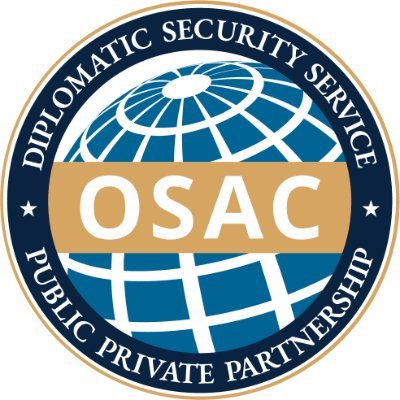
How to use the Safety Index
On this page, you will find the country score and the personal opinions on safety of other women traveling solo.
You can sort the comments by:
- The level of experience traveling solo of the reviewer (beginner = <5 trips solo, Intermediate = 5 to 10 trips solo, Experienced = >10 trips solo).
- The age of the traveler.
- Whether they are a visitor or local.
- The date they were posted.
The safety scores range from 1 to 4 with 1 being the safest and 4 being the most dangerous for solo female travelers.
Thus, the lower the score, the safer the country.
Looking for more safety resources?
This entire website is devoted to helping women travel solo. Check out the links below to learn more:
Solo Female Travel Stats: Results from the the largest, most comprehensive and only global research study on solo female travel trends, preferences and behaviors published.
Thanks to Jacobo Vilella for creating the Solo Female Travelers Safety Index ❤️

